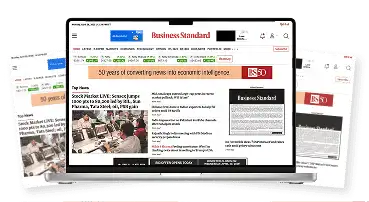| "However, the last 12 months have seen significant changes in the power policy framework in the country," it says, adding that post Electricity Act 2003, many opportunities will emerge, which will have to be carefully evaluated by companies. |
| The critical parameter would be the scenario regarding cash profit or loss position of the state concerned, the report on the Indian power industry said. |
| The Electricity Act 2003 had opened up new opportunities for companies in power generation, transmission and trading. It also opened up scope for supply of power to consumers outside licence areas as franchisees, distribution licensees and power generators. |
| The Act provides the option to power producers to sell their electricity directly and not go through the SEBs. |
| "The companies entering the field of power generation and distribution will still have to evaluate the economics of power distribution in the state concerned. |
| "The continuing process of deregulation of SEBs will make these opportunities increasingly attractive," it said, adding that current licensees, however, would see an increase in competition. |
| The demand for power was expected to continue to increase over the medium to long term, necessitating significant increase in capacities, resulting in increased demand for generation and distribution capacities. |
| The key success factors for a power generation and distribution company were presence in premium areas and states, a high level of integration, high plant load factor and availability. |
| In addition, low transmission and distribution losses, strong distribution network, customer reach, geographical location of power generation facilities and strong financial strength were also critical. |
| The power sector was one of the most important growth engines for an economy, the Icra study said. |
| However, the Indian power sector continued to be plagued by a variety of weaknesses such as perennial shortages, skewed tariffs, poor distribution and sub-distribution networks and high aggregate technical and commercial losses, the report said. |
You’ve reached your limit of {{free_limit}} free articles this month.
Subscribe now for unlimited access.
Already subscribed? Log in
Subscribe to read the full story →

Smart Quarterly
₹900
3 Months
₹300/Month
Smart Essential
₹2,700
1 Year
₹225/Month
Super Saver
₹3,900
2 Years
₹162/Month
Renews automatically, cancel anytime
Here’s what’s included in our digital subscription plans
Exclusive premium stories online
Over 30 premium stories daily, handpicked by our editors


Complimentary Access to The New York Times
News, Games, Cooking, Audio, Wirecutter & The Athletic
Business Standard Epaper
Digital replica of our daily newspaper — with options to read, save, and share


Curated Newsletters
Insights on markets, finance, politics, tech, and more delivered to your inbox
Market Analysis & Investment Insights
In-depth market analysis & insights with access to The Smart Investor


Archives
Repository of articles and publications dating back to 1997
Ad-free Reading
Uninterrupted reading experience with no advertisements


Seamless Access Across All Devices
Access Business Standard across devices — mobile, tablet, or PC, via web or app





